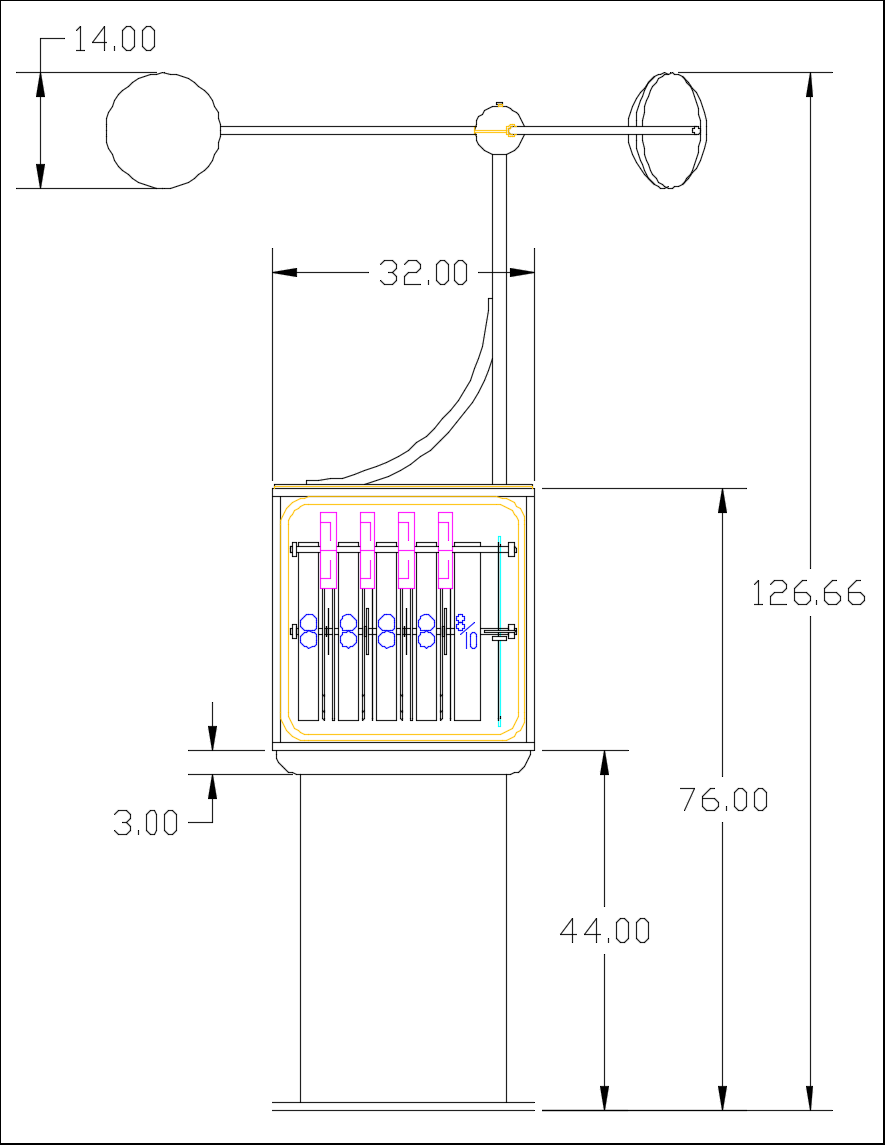Updated May 18, 2016: new rotor in diagram.
I really like wind-powered projects. Ten years ago I made a wind-powered graywater evaporation device, several years after that I helped Larry “Ember” Breed teach his Gray-B-Gone Evapotron construction courses. But unlike those wind-powered projects, this one doesn’t perform any practical purpose: it just displays the amount of air that has passed the art piece during the week, measured in miles. Hence, the project’s name, Miles.
Miles is the size of an old-style phone booth. It is topped with a 6-foot-diameter anemometer rotor that makes the project just over ten feet high. I’ve decided to decorate Miles using patterns of my own design in an Art Deco style. I’ve already selected the piece’s construction materials and designed its interior mechanism. Recently I’ve begun work on the exterior style after looking at over half a dozen books on Art Deco architecture.
Since Miles measures wind passage instead of wind speed, it is a totalizing anemometer. Its mechanical readout may look familiar: if you’ve ever used an old audio cassette-tape deck or a reel-to-reel tape deck, or an old film editor, you would have seen a mechanical footage counter or a frame counter measuring movement of the tape or film. The interior mechanism of Miles is exactly the same, only larger, and instead of measuring feet of tape or indicating frames of film, it is calibrated to report miles of air.
The interior mechanism of Miles is visible through four glass windows. Five digit wheels, each 22-inches in diameter, mesh with four 9-inch-diameter “Geneva devices.” In operation, the interior of Miles looks like the interior of this totalizer.
Subsequent reports will cover materials selection, design of the enclosure and the interior mechanism, and the Art Deco details. Fabrication begins this Summer.
